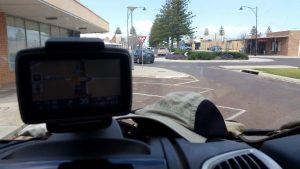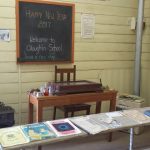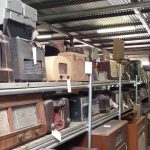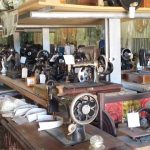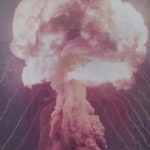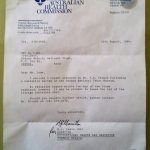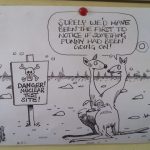After a 1200km drive across the Nullarbor, we arrived at Ceduna and performed the manoeuvre at the roundabout.
From here, you can either drive directly across to Port Augusta or you can tour the Eyre Peninsula. The Peninsula is famous for its seafood, particularly oysters, so we weren’t going to miss out on that. Ceduna itself is a small, quiet, seaside town but you can’t help noticing there’s a large court house, a domestic violence unit, a relationship centre and the caravan park has a security fence.
I spent some time at the National Trust Museum which should get an award for packing the most exhibits into the smallest space. It has rooms full of radios, sewing machines, typewriters, stuffed birds, household appliances; sheds full of farm machinery and vehicles; a school building, a relocated cottage to name a fraction.
One particularly interesting room had displays about the Atomic testing carried out by the British in the 1950’s at Maralinga which is 400km NW of Ceduna This seems to be a largely unknown part of Australian history. At the time, the town housed 550 British and Australian nuclear scientists, technicians and Army and Air Force personnel. There were 7 major weapon tests at Maralinga and hundreds of ‘minor’ trials including radiological experiments which scattered long-lived plutonium over a large area. There were long term health issues for service personnel and the local communities. For example pilots were told to fly through the toxic clouds to gather data.
The site was cleaned up in the late 90’s and now there are 3-day tours out to the testing grounds where you can explore the remaining infrastructure and visit the burial pits where all the contaminated equipment was buried. We decided to pass on this one.

